Sebastian Barker began his career in visual effects in 2006 at Rushes working on films such as 28 Weeks Later and RocknRolla. In 2014, he is one of the co-founders of Automatik and is working on projects such as The Titan, Fortitude, Curfew and The Personal History of David Copperfield.
What is your background?
My background was in animation originally but soon started playing around in other areas of VFX. I became what we call a ‘generalist’ in the VFX industry starting out at soho institution ’Rushes post production’. Learning many aspects of the VFX process helped me move quickly into VFX supervision and open my first studio as a wide eyed 25 y/o, it was a steep learning curve!
How did you and Automatik get involved in this movie?
I was put forward by producer Ben Pugh who I’d worked with on almost 10 movies now, after a good meeting with director Mikael I was bought onboard as overall VFX Supervisor. Automatik is my company so naturally bought them along for the ride.
How was the collaboration with Director Mikael Håfström?
Great. Mikael is a very experienced director, he knows what he wants but doesn’t micromanage or fuss. It’s great working with any director that brings you into their creative process and gives you a voice. He’s great fun to be around too!
What was his approach and expectations about the visual effects?
He had a big vision for the VFX in OTW but he’s also pragmatic and understood that recourse was finite, we weren’t working with an Avengers budget so we had to be clever.
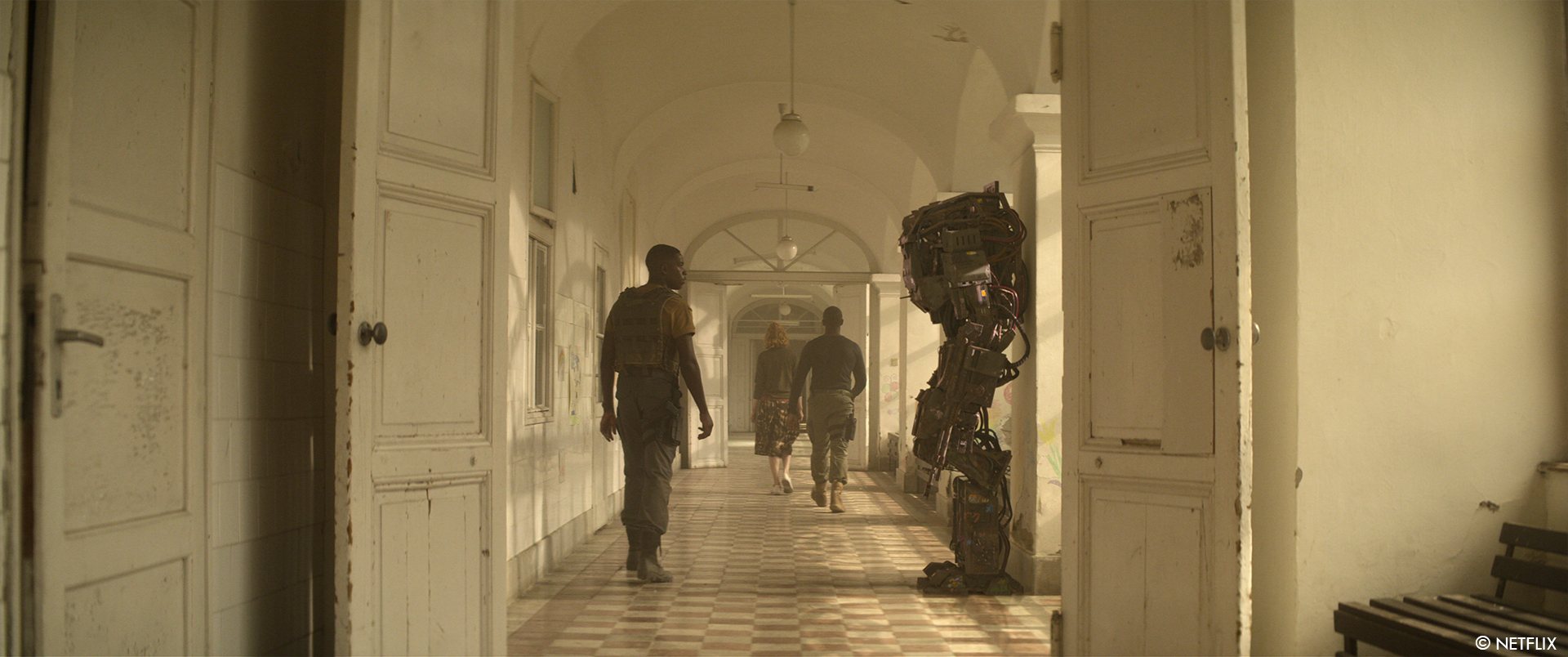
How did you organize the work with your VFX Producer?
VFX Producer Joe Carhart did an amazing job keeping track of the films 1350+ VFX shots while the edit continued to change, he gave me the space to concentrate on briefing and reviewing shots as they came in.
What kind of references and influences did you receive from the director?
Mikael’s brief was to make the robots feel grounded, 10 years in the future not 100. We looked at a lot of current day robotic tech, specifically what they’re upto right now in Boston dynamics and Darpa so we could feed into our designs. One thing that designer Joel Colins brought to the table early on was the use of fabrics. Other than looking cool we figured that they would try to protect their Gumps to keep them operational under fire for as long as possible, the US Gumps were designed in such a way that they could use soldiers body armour (and use human weapons), the insurgents had adorned their Gumps by re-purposing any old armour they could find and ratchet strapping it to them.
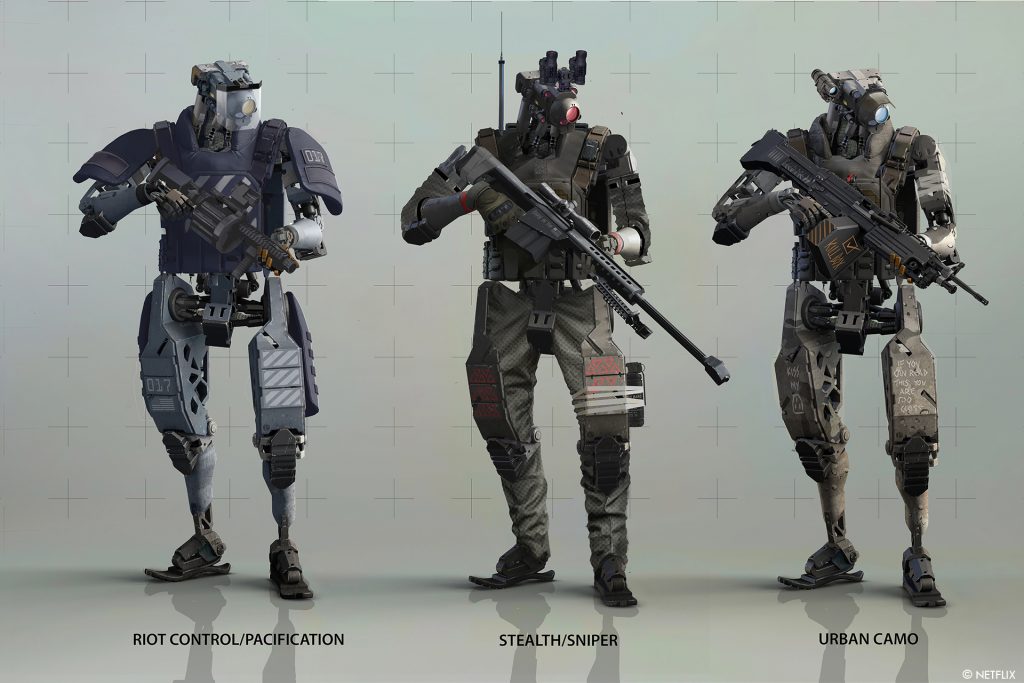
Can you explain in detail about their creation and animation?
We knew animation testing would play a key role in our Gumps design so we created a blocky, low resolution mesh & rig early on in the process to understand how they move. The basic rule was that US Gumps are tactical and nimble whereas the Insurgent Gumps are slow and lumbering but wield bigger firepower – the classic ‘heavy’. This led to the idea that the Insurgent gump had to fold down to control the recoil of his massive 50cal (that we see vicariate a couple of US Gumps) but left them susceptible to fire from behind. The US Gumps interacted much more like a special forces unit, stacking up and using their surroundings for cover as they advanced.
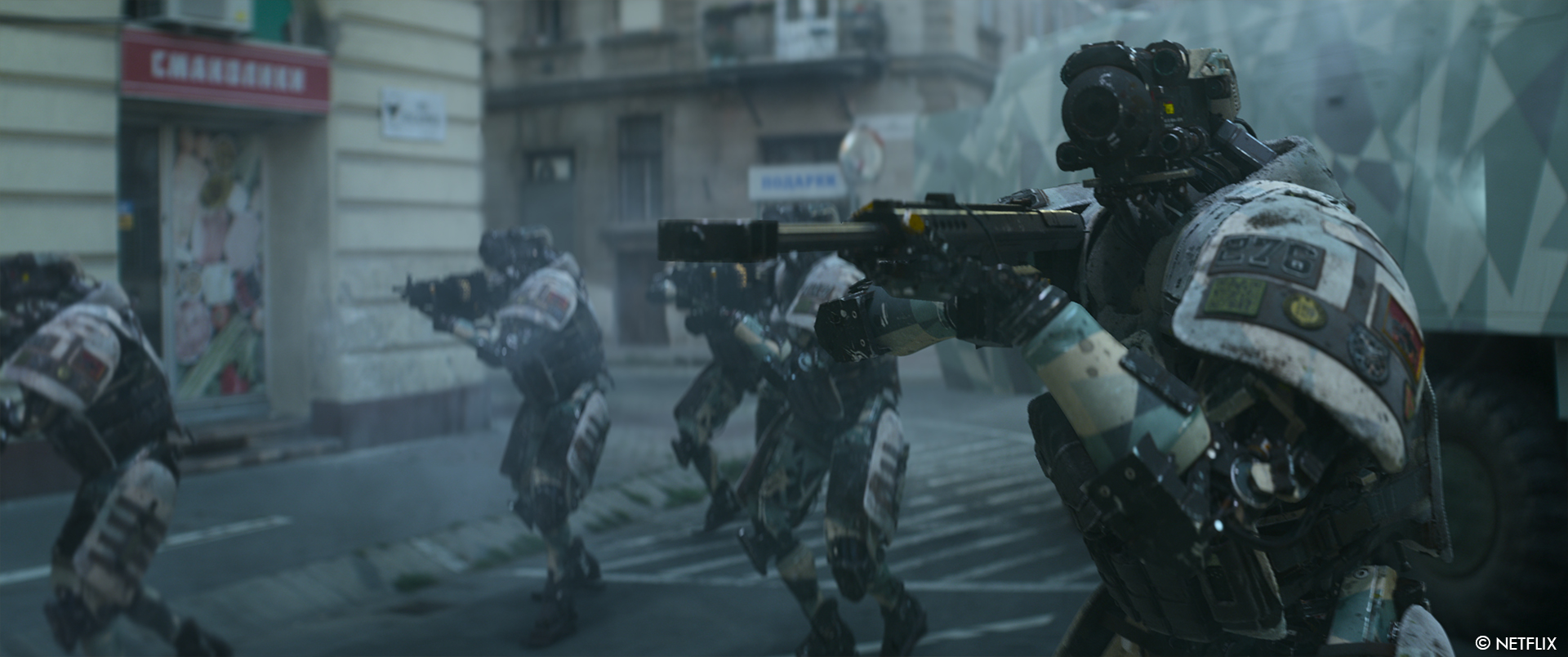
Can you elaborate on the mix of practical and VFX work for the Gumps?
The Gumps were entirely CG all of the time however we had a 3D printed head that we could bring onto set for lighting reference. The SFX guys did a great job of providing explosions and sparks in our key interactive & battle scenes, this was added to with simulated FX to get the scale and shape the director was after.
Captain Leo (Anthony Mackie) is another level of robot. Can you tell us more about him?
Leo was a tricky one. Humanoid robots have been done so much before that finding an original design whilst retaining some degree of plausibility is really difficult. Coupled with that Leo had a perfectly ‘Human’ face so going too low tech on the body you’d disbelieve they would have the technology to make his face so convincing. In the end we decided it was in the negative space that we could find something really interesting , think about how strong an iron bar is, a metal structure doesn’t need to be chunky to be strong. Stripping him back we could create a visually striking image that stuck through the film despite only seeing his full body once. To give him a human physicality we added a rhomboid mesh of shape shifting polymers that move like muscles as electrical current is passed through under a transparent graphene skin, this exo-mesh would flex and shift to simulate muscle tension and give his form. The final element was the digital blushing effect which he uses to bring density back to his skin, this was key to him being able to go undercover without being caught out the moment he rolled his sleeves up!
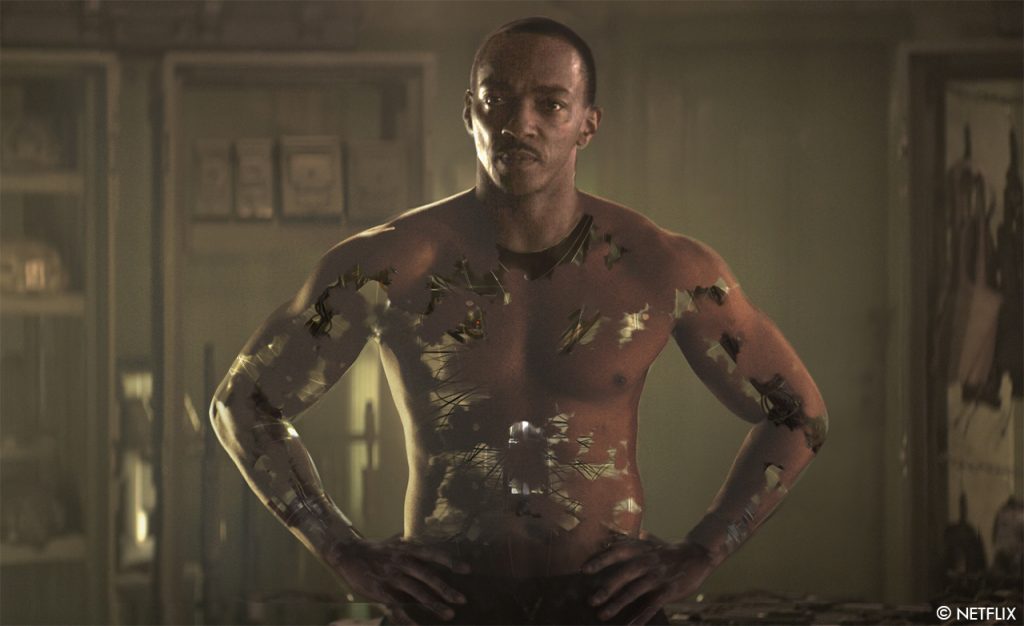
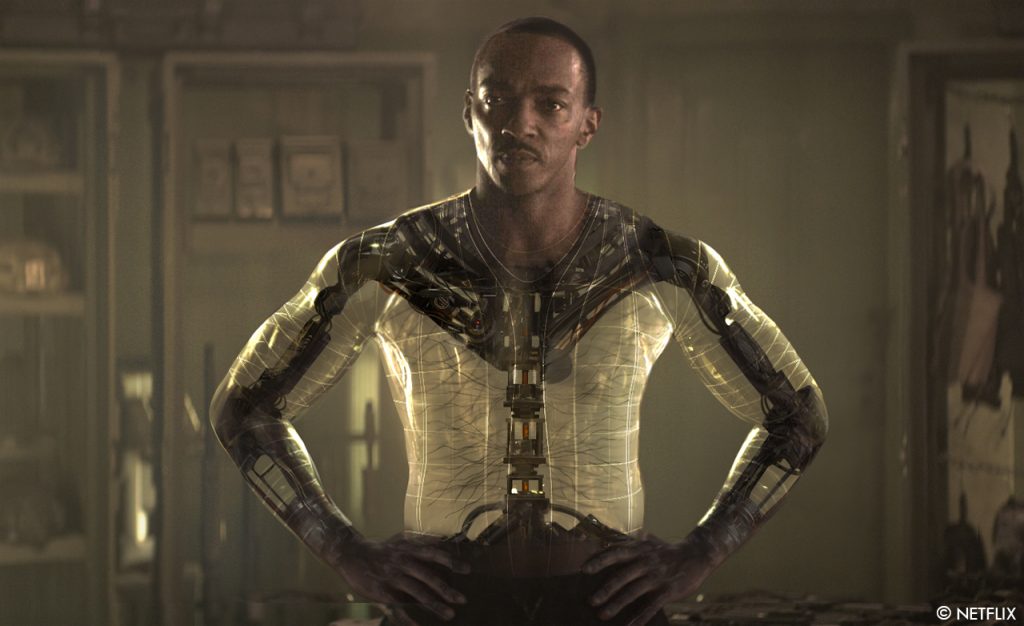
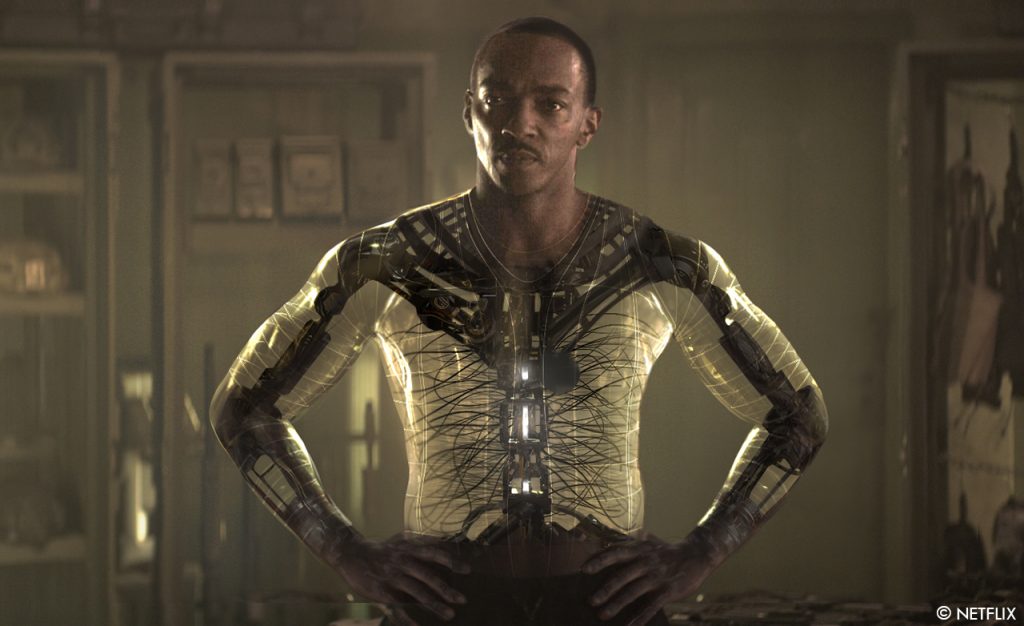
How did you handle the matchmove challenge for Leo?
As is often the case with these complex body tracks we ended up tracking by eye. A full mocap setup wasn’t a viable solution on location and for a scene of 10 shots hand tracking was more cost effective. Of course good markers can give you some automated data but invariably need manual intervention to put them in the right place in 3D space.
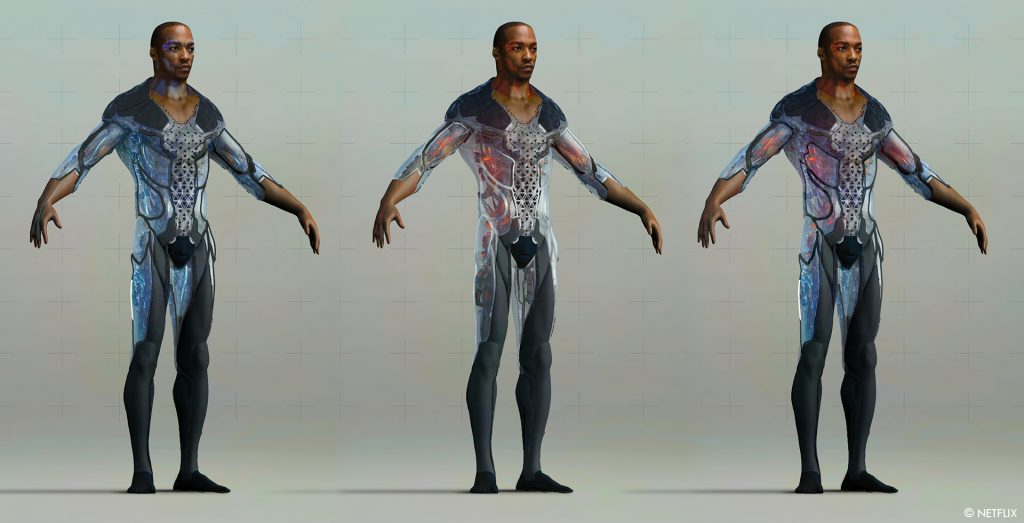
Can you elaborate on the drones and planes creation?
Again we wanted them to feel grounded, like US military tech in 10 / 20 years. So we took the latest concept attack drone in the US military which is the ‘General Atomics Avenger’ or ‘Predator C’, third generation attack drone, we looked at the design progression between the three existing generations and made our own fourth gen attack drone, our ‘Predator D ‘ if you will.
The movie is taking us to various locations. How did you create these environments?
Shooting in Hungary we had access to some fantastic locations. Ex Soviet, abandoned military installations, huge power stations. This gave us an amazing staging area to choreograph our action, but as is often the case we had to use VFX to extend streets, add destruction and give them a sense of being in an active war zone. The trickiest location from a VFX standpoint was probably outside Sofia’s orphanage when Leo & Harps truck pulls up, here the only usable piece of set was the front wall of Sofia’s compound, so everything else, streets and all, was CG.
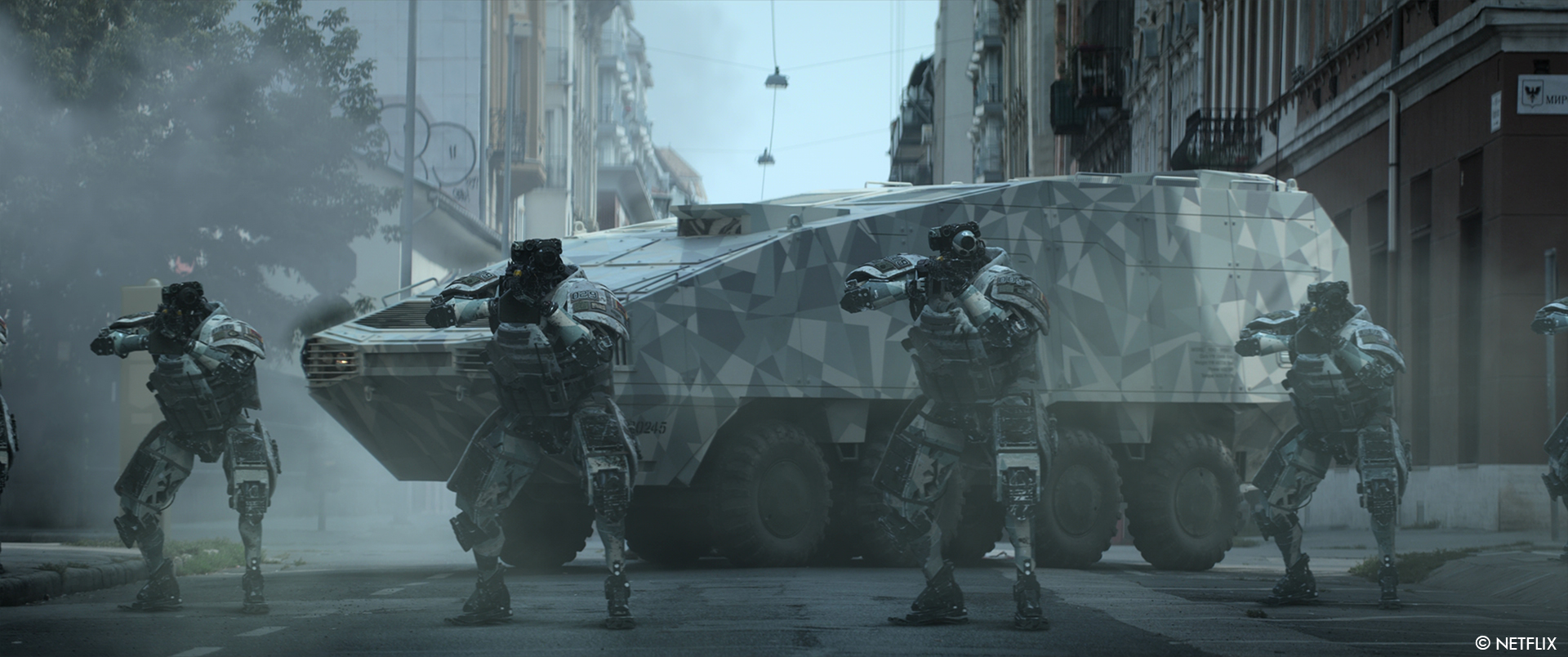
Can you elaborate on how the various motion graphics work?
Motion graphics in the film served the purpose of explaining the story’s plot points so the design had to be simple enough for this to land. Older looking animated maps gave historical context of the missile silos designed to feel like they’d been made during the Soviet era, then high tech digital graphics designed to look like current (for OTW) day tech. We felt the different styles would help the audience quickly understand what they relate to.
How did you choose the vendors?
Automatik came with me, VFX producer Joe Carhart bought Atomic onboard from his past experience. We also set up a small in-house team in editorial to handle easier 2D work as it came up.
How did you split the work amongst these vendors?
It made sense for Automatik to handle all of the CG, animation, and set extension work as we’d spent the months leading up to edit lock building assets and working on look-dev, this came to about 850 shots. The remaining 500 were simpler car interior blue screens and cleanup work so packaged this up and broke it out as a chunk.
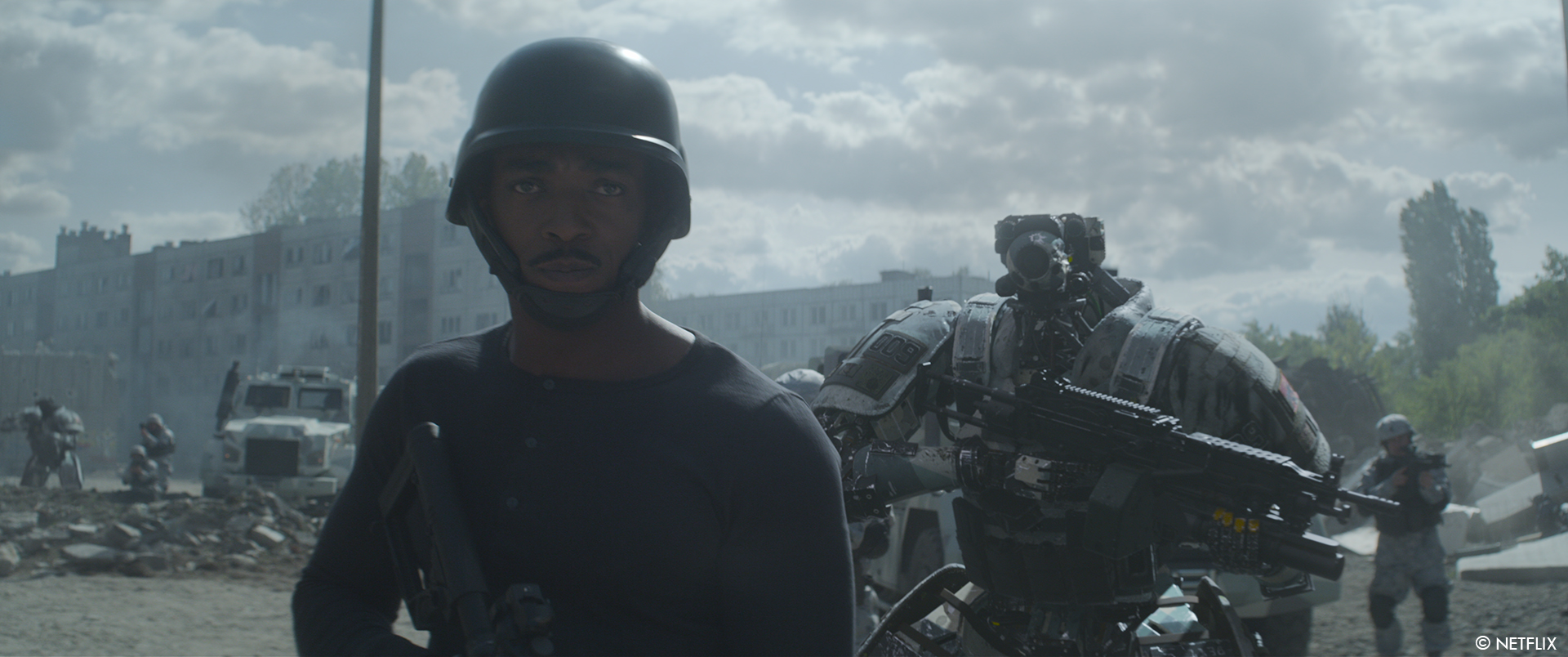
Which sequence or shot was the most challenging?
From a technical perspective the Leo sequences posed several challenges. Partly the obvious body tracking but also getting his reflective body to blend with his head and look realistic, it took some time to figure this out – not easy!
What is your favorite shot or sequence?
I always loved the Gumps in Sofia’s orphanage, the way she’s repurposed them to water her plants or entertain the kids is really playful and makes a nice contrast from the kill bots we see elsewhere in the film. We put a bunch of details including kids drawings and stickers over their legs and bodies, like the kids have used them as a big colouring book, sadly we never have a tight enough shot to see them!
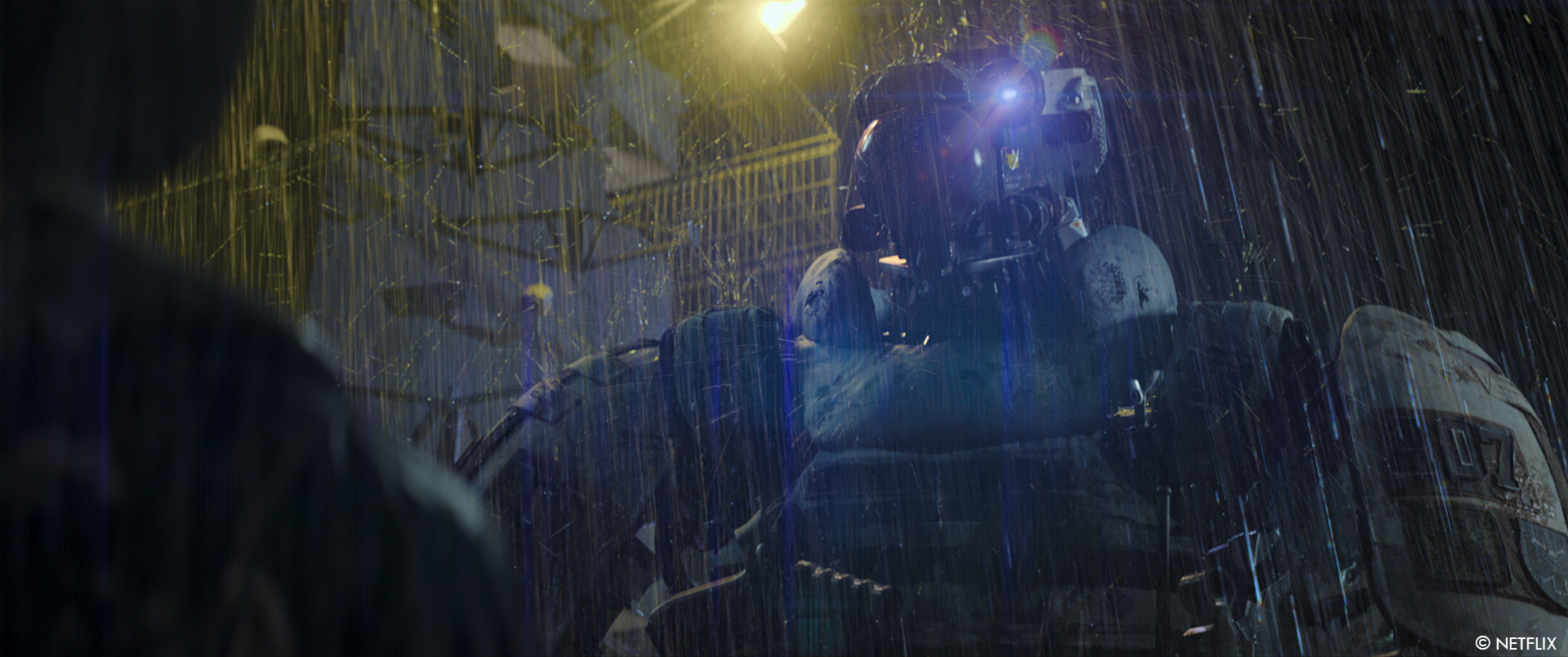
What is your best memory from making this film?
On the first recce being taken inside the giant cooling tower of a working power-station was mega. It’s actually one of my favourite parts of film making getting into incredible locations you’d otherwise never gain access too.
How long did you work on this film?
Blimey, 18months? Long enough to become a dad (which I did during postproduction!)
What’s the VFX shot count?
1353.
What was the size of your team?
40 in Automatik not including other vendors.
What is your next project?
I have a few irons in the fire but I can’t really talk about them ..
What are four movies that gave you a passion for cinema and VFX?
I’m 34 y/o now, these were the films that really struck a chord when I saw them in my early teens: Jurassic Park, John Carpenter’s The Thing (original), Aliens, The Matrix.
A big thanks for your time.
// Outside The Wire’s Groundbreaking Visual Effects Explained
WANT TO KNOW MORE?
Automatik: Dedicated page about Outside the Wire on Automatik website.
Netflix: You can watch Outside the Wire now.
© Vincent Frei – The Art of VFX – 2021



